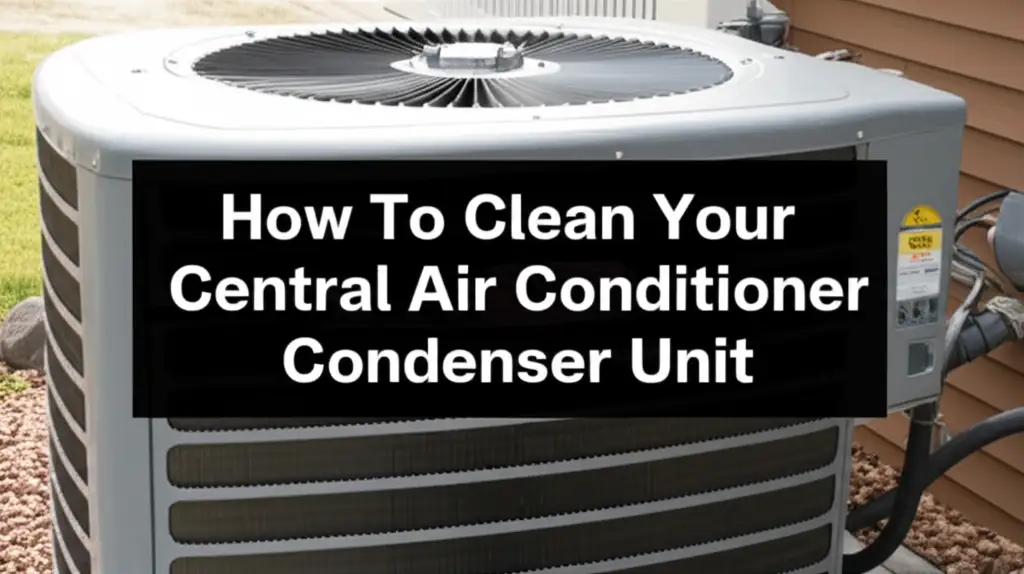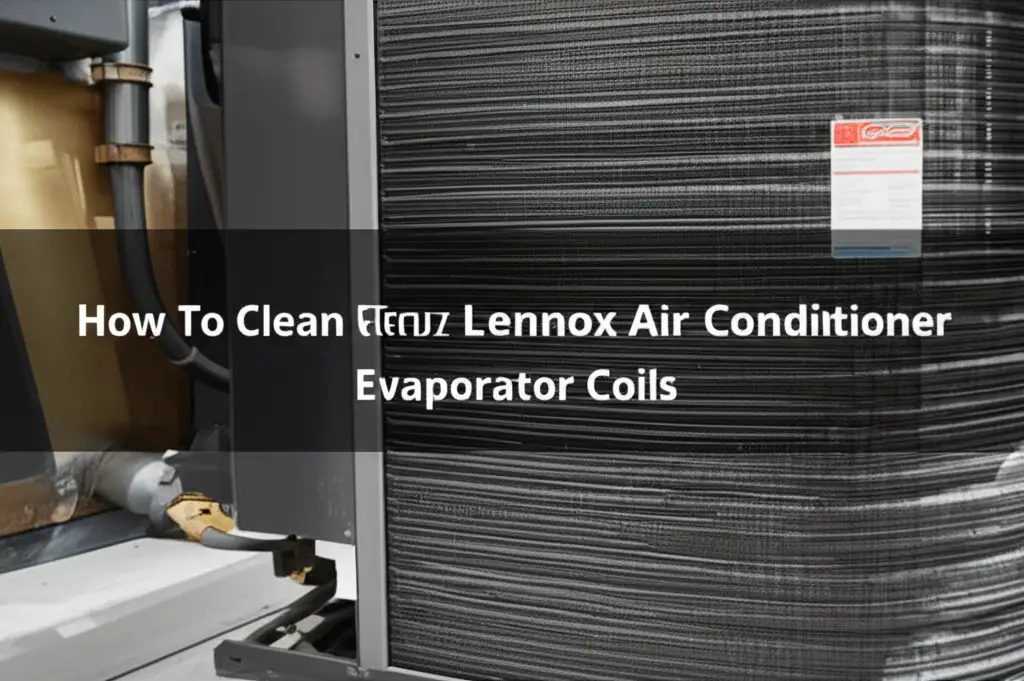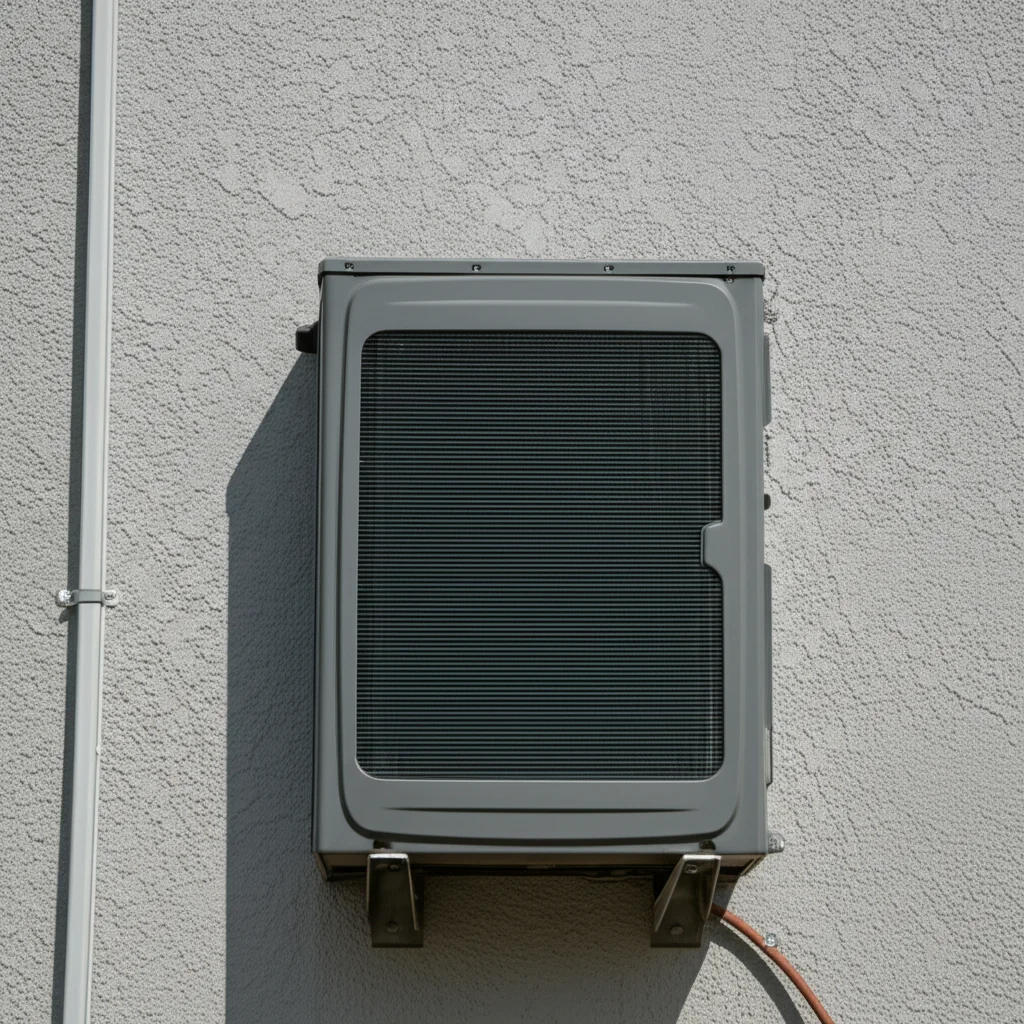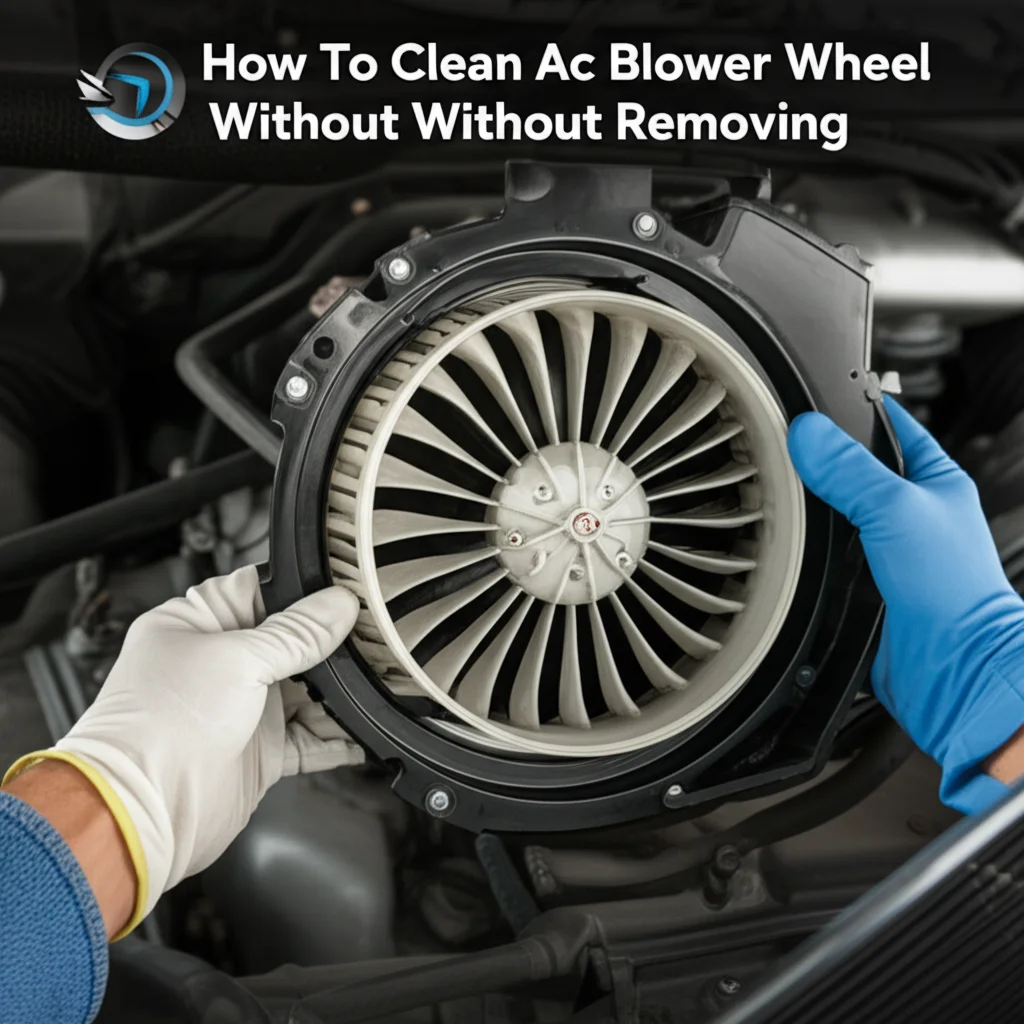· Todd Martin · Home Maintenance · 15 min read
How To Clean Ac Compressor

How To Clean Your AC Compressor for Optimal Performance
Have you ever noticed your air conditioner struggling on a hot day? Perhaps it does not cool your home as well as it once did. The hidden culprit could be a dirty AC compressor. Many people overlook this vital component. Keeping your air conditioning system in top shape extends its life and saves you money. A clean AC compressor works more efficiently. This means lower energy bills and more consistent cooling.
Understanding how to clean AC compressor components is a key part of home maintenance. This guide will walk you through the entire process. We cover everything from safety precautions to essential tools. You will learn the exact steps to clean your AC unit’s outdoor section, where the compressor is located. We also discuss when to seek professional help and how regular cleaning helps your AC perform better.
Takeaway
Keeping your AC compressor clean is vital for its performance and lifespan.
- Always disconnect power first for safety.
- Clear debris from around the unit regularly.
- Clean condenser coils with a specialized cleaner or water.
- Ensure fan blades are free of dirt and grime.
- Schedule professional maintenance for thorough checks.
To clean an AC compressor, first cut power to the entire outdoor unit. Then, remove the top grille and side panels to access the internal components. Use a shop vac to remove large debris, then apply a coil cleaner or use a hose to gently rinse the condenser coils from the inside out. Finally, clean the fan blades and reassemble the unit.
Understanding Your AC Compressor and Its Role
The AC compressor is the heart of your air conditioning system. It moves refrigerant through the system. This process is how your home gets cool air. The compressor lives inside the outdoor unit, also known as the condenser unit. It takes the low-pressure, low-temperature refrigerant gas from the evaporator coils. Then, it compresses this gas. This action raises its temperature and pressure.
This high-pressure, hot gas then moves to the condenser coils. These coils release heat outside your home. Without a working compressor, your AC unit cannot cool your space. Dirt and debris often build up on the condenser coils. This buildup makes the compressor work harder. The unit then uses more energy to cool your home. Over time, this extra work can cause the compressor to fail early. Regular cleaning prevents this problem. It helps your entire AC system run smoothly and efficiently. Understanding its function helps you appreciate why how to clean your air conditioner is so important.
Essential Safety Precautions Before Cleaning Your AC Compressor
Safety must be your top priority when working with electrical appliances. Your AC compressor deals with high voltage. Ignoring safety steps can cause serious injury or even death. Never attempt to clean any part of your AC unit without first cutting power. This is the most crucial safety measure. Always go to your home’s main electrical panel. Locate the circuit breaker labeled for your outdoor AC unit. Flip the switch to the “off” position. Some units have a disconnect switch located near the outdoor unit itself. Turn this off too, if present.
Wear appropriate personal protective equipment. Heavy-duty gloves protect your hands from sharp fins and chemical cleaners. Safety glasses shield your eyes from debris and cleaning solutions. A dust mask can prevent you from inhaling dust and mold spores. Ensure the area around the unit is clear. Remove any toys, tools, or other items. This prevents tripping hazards. Never spray water directly into electrical components. Always direct water away from wiring. Taking these steps keeps you safe during the cleaning process.
Gathering the Right Tools and Cleaning Supplies
Having the correct tools makes the cleaning process easier and more effective. You do not need many specialized items to clean your AC compressor. Most supplies are likely already in your garage or easily purchased. Start with a stiff brush or a shop vacuum. These help remove loose debris. A garden hose with a spray nozzle is essential for rinsing. Make sure the nozzle allows for a gentle spray, not a high-pressure jet. High pressure can damage the delicate fins on the condenser coils.
You will also need a fin comb. This tool helps straighten bent aluminum fins on the coils. Bent fins restrict airflow. This makes your unit less efficient. Choose a coil cleaner specifically designed for AC units. These cleaners often foam up to lift dirt from deep within the coils. Some are self-rinsing. Others require a light rinse. Always read the product instructions. A screwdriver or wrench set might be needed to remove the protective casing. Having a bucket for mixing cleaner, if necessary, is also helpful. Gather all your tools before you start. This prevents interruptions during the cleaning process.
Step-by-Step Guide to Cleaning Your AC Compressor
Cleaning your AC compressor, which is part of the outdoor unit, involves several steps. Following these steps ensures a thorough and safe cleaning. Take your time with each stage. This detailed approach improves your AC unit’s performance.
Step 1: Disconnect the Power Safely
This is the most critical first step. Locate the main circuit breaker panel in your home. Find the breaker switch that controls your outdoor AC unit. Flip it to the “off” position. Many outdoor units also have a disconnect switch right next to them. Turn this off as well. Always double-check that the power is off before touching the unit. I always make sure the unit is completely powered down. This step protects you from electrical shock.
Step 2: Clear Away Loose Debris
Begin by clearing the area around the outdoor unit. Remove any leaves, twigs, grass clippings, or other plant matter. These materials can block airflow. Use a broom or rake for larger debris. Then, use a shop vacuum to remove smaller pieces from inside and outside the unit. Pay close attention to the bottom and sides of the condenser unit. Dirt and leaves often accumulate there. This initial cleanup prevents dirt from spreading during the water rinse. Cleaning the outside AC unit thoroughly improves efficiency.
Step 3: Access the Compressor and Coils
To properly clean, you need to access the coils surrounding the compressor. Most outdoor units have removable panels. Use a screwdriver or wrench to take off the top grille. Then, carefully remove the side panels. This exposes the condenser coils. You might also see the large fan blades. Be gentle with these parts. They can be fragile. Some units have a cage that encloses the fan. Remove it if necessary. This step allows you to reach all parts for a deeper clean.
Step 4: Clean the Condenser Coils
The condenser coils are vital for heat transfer. They get very dirty. You can use a special coil cleaner. Spray the cleaner evenly over the coils. Let it sit for the time recommended on the product label. The cleaner will foam up and lift dirt. Some cleaners are “no-rinse” and will drip away. Others require a gentle rinse. If rinsing, use your garden hose with a low-pressure nozzle. Spray from the inside out. This pushes dirt away from the unit. Avoid high-pressure sprays. They can bend the delicate fins. This is a lot like how to clean coils on a window AC unit.
Alternatively, you can clean coils with just water if they are not too dirty. Again, spray from the inside out. Ensure all dirt and debris are washed away. Pay attention to all sides of the coil. A clean coil improves heat exchange. This reduces strain on the compressor. My preferred method is a good quality coil cleaner for best results.
Step 5: Straighten Bent Fins (If Necessary)
After cleaning, inspect the coil fins. These are the thin metal strips on the coils. They can bend easily from debris or during cleaning. Bent fins restrict airflow. This makes your AC unit work harder. Use a fin comb to gently straighten any bent fins. A fin comb has different tooth sizes. Choose the one that matches your coil’s fin spacing. Slide the comb along the bent area. Be very careful. These fins are delicate. Straightening them helps air flow freely. This boosts your unit’s efficiency.
Step 6: Clean the Fan Blades and Motor Area
The fan blades pull air through the condenser coils. They can collect a lot of dirt and grime. Carefully wipe down each fan blade with a damp cloth. You can also use the shop vacuum to clean off any remaining dust. Inspect the fan motor area. Make sure it is free of debris. Do not spray water directly onto the motor. It is an electrical component. A clean fan ensures proper airflow. This is crucial for the compressor to release heat. This step helps the entire unit run more smoothly. This is part of a larger process of how to clean your AC unit inside.
Step 7: Inspect and Reassemble the Unit
Once all cleaning is complete, inspect everything. Check for any remaining dirt. Look for loose wires or components. Ensure all parts are secure. Carefully replace the side panels. Then, reattach the top grille. Make sure all screws are tightened. Once the unit is fully reassembled, you can restore power. Go back to your main electrical panel. Flip the AC circuit breaker back to the “on” position. If you have an outdoor disconnect switch, turn it back on. Wait a few minutes before turning on your AC system. This allows the system to stabilize. Then, test your AC. It should run more efficiently now.
When to Consider Professional Help for Your AC Compressor
While basic cleaning is a DIY task, some situations require professional help. If your AC unit is not cooling after a thorough cleaning, there may be a deeper issue. A professional can diagnose refrigerant leaks. They can check the compressor’s internal components. Compressors are sealed units. You cannot clean their internal parts yourself. Any problem within the compressor itself needs an expert. If you hear unusual noises from the outdoor unit, call an HVAC technician. Grinding, humming, or rattling sounds indicate a problem. These noises often point to failing bearings or internal compressor issues.
Attempting complex repairs yourself can cause more damage. It can also void your warranty. Professionals have specialized tools and knowledge. They can safely handle refrigerants. They also ensure all electrical connections are secure. If you are uncomfortable with any step of the cleaning process, call for help. It is always better to be safe. Regular professional check-ups complement your DIY cleaning efforts. This ensures your AC system remains in top condition for years. For comprehensive air conditioner maintenance beyond cleaning, consider professional services.
Frequency and Best Practices for AC Compressor Maintenance
Regular maintenance extends the life of your AC unit. It also keeps your energy bills low. I recommend cleaning your outdoor AC unit, including the compressor area, at least once a year. The best time to do this is in late spring. This is before the peak cooling season begins. If you live in an area with a lot of dust, pollen, or falling leaves, you might need to clean it more often. Twice a year, once in spring and once in fall, is ideal for some homes. For instance, knowing how to clean your outside AC unit with a water hose efficiently can make this task quicker.
Here are some best practices for ongoing maintenance:
- Keep the area clear: Regularly trim back shrubs and plants at least two feet away from the unit. This ensures good airflow. Remove any weeds or grass growing close to the unit.
- Check for obstructions: After strong winds or storms, inspect the unit for fallen branches or other debris. Clear these away immediately.
- Clean coils regularly: Even if you do not do a full deep clean, a quick spray of the condenser coils with a hose can help between major cleanings. Remember to spray from the inside out.
- Address standing water: Ensure the ground around your unit drains properly. Standing water can rust the base and encourage mold growth. If you are concerned about mold, remember there are specific steps on how to clean mold from AC unit.
- Inspect wiring: Look for any frayed or loose wires during your cleaning process. If found, have a professional inspect them.
- Schedule professional tunes-ups: A professional HVAC technician can perform a comprehensive check annually. They check refrigerant levels, electrical connections, and calibrate thermostats. This ensures everything runs perfectly.
- Don’t forget the indoor unit: While focusing on the outdoor compressor, remember your indoor unit also needs care. This includes cleaning the indoor coil and filters. Knowing how to clean an AC unit inside is equally important for overall system health.
By following these best practices, your AC compressor and entire system will work more efficiently. This leads to a more comfortable home and fewer costly repairs.
The Benefits of a Clean AC Compressor: Efficiency and Longevity
A clean AC compressor provides numerous benefits for your home and your wallet. The most immediate advantage is improved energy efficiency. When condenser coils are covered in dirt, the AC unit struggles to release heat. This means the compressor must work harder and longer to cool your home. A clean unit does not have this problem. It can transfer heat easily. This reduces its power consumption. Lower power usage translates directly into lower energy bills. You will notice the savings, especially during hot summer months.
Beyond energy savings, a clean compressor significantly extends the lifespan of your entire AC system. The compressor is an expensive part to replace. When it works too hard due to dirty coils, it experiences more wear and tear. This stress shortens its life. Regular cleaning prevents this overworking. It keeps the internal components cooler. This reduces the risk of overheating and premature breakdown. A well-maintained compressor runs more smoothly. This leads to fewer repairs. It also ensures consistent, effective cooling throughout your home. Investing a little time in cleaning your AC unit protects a significant investment.
Frequently Asked Questions About Cleaning Your AC Compressor
Why is cleaning the AC compressor so important?
Cleaning the AC compressor is crucial because it keeps your air conditioner running efficiently. A dirty compressor works harder to cool your home, leading to higher energy bills and increased wear and tear. Regular cleaning prevents premature breakdowns and extends the lifespan of your entire AC system, ensuring consistent comfort.
How often should I clean my AC compressor?
You should aim to clean your AC compressor, or more accurately, the outdoor condenser unit where it resides, at least once a year. The best time is typically in late spring, before the hot season begins. If your area has a lot of dust, pollen, or falling leaves, consider cleaning it twice a year for optimal performance.
What tools do I need to clean an AC compressor?
You will need a few basic tools to clean your AC compressor. Gather a stiff brush or shop vacuum for debris removal, a garden hose with a low-pressure nozzle, and a fin comb for straightening bent coil fins. A specialized AC coil cleaner is also highly recommended. Don’t forget safety gear like gloves and safety glasses.
Can I clean the AC compressor myself, or do I need a professional?
You can perform a basic cleaning of the outdoor condenser unit, including the coils surrounding the compressor, yourself. This involves clearing debris, cleaning coils, and straightening fins. However, if your unit has internal issues, unusual noises, or requires refrigerant handling, always call a certified HVAC professional.
What are the signs that my AC compressor needs cleaning?
Common signs that your AC compressor, or outdoor unit, needs cleaning include reduced cooling performance, higher energy bills despite normal usage, and visible dirt or debris on the condenser coils. The unit might also run longer cycles to reach the desired temperature or make unusual noises due to restricted airflow.
Is it safe to use a pressure washer on my AC unit?
No, it is not safe to use a high-pressure washer on your AC unit, especially the delicate condenser coils. High pressure can easily bend the aluminum fins, which will restrict airflow and reduce efficiency. Always use a regular garden hose with a gentle spray nozzle to clean the coils, applying water from the inside out.
Conclusion
Taking the time to clean your AC compressor is a smart investment in your home’s comfort and your financial well-being. A clean compressor is an efficient compressor. It ensures your air conditioning system delivers cool, consistent air when you need it most. We have covered the critical steps, from safety precautions to the actual cleaning process. You now have a clear understanding of how to clean AC compressor components.
Remember to prioritize safety above all else. Always disconnect power before you begin any work on your unit. Regular cleaning, combined with professional check-ups, forms the backbone of good AC maintenance. This simple task can significantly extend the life of your unit. It also keeps your energy bills in check. Don’t let a dirty compressor steal your comfort or your money. Take action today. A little effort now ensures your home stays cool and comfortable all season long. Start your routine AC maintenance to enjoy the benefits of a well-running system.
```json
{
"publishDate": "2025-06-17T00:00:00Z",
"title": "How To Clean Ac Compressor",
"excerpt": "Learn how to clean your AC compressor effectively. This guide covers step-by-step instructions, essential tools, and safety tips for optimal AC performance.",
"image": "https://res.cloudinary.com/dbcpfy04c/image/upload/v1743184673/images_k6zam3.png",
"category": "Home Maintenance",
"tags": [
"AC maintenance",
"compressor cleaning",
"HVAC cleaning",
"outdoor AC unit",
"air conditioner care"
],
"metadata": {
"canonical": "https://www.homeessentialsguide.com/how-to-clean-ac-compressor"
}
}




